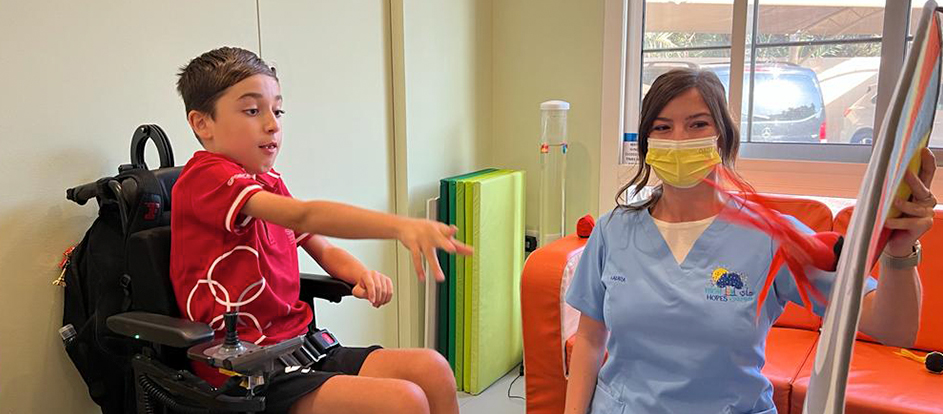Understanding Duchenne Muscular Dystrophy
On the occasion of the World Duchenne Awareness Day on 7 September, we shed light on Duchenne Muscular Dystrophy (DMD) through this blog entry.
Overview
DMD is a genetic disorder characterized by progressive muscle weakness and degeneration. It is caused by variations of a protein in the muscle called dystrophin, which helps keep muscle cells complete (Crisafulli S et al, 2020). The protein variation causes the muscle fibers to break down, which makes the muscles to weaken gradually, leading to fatal consequences.
Prevalence
DMD almost always affects males and is very rare in females—females with the gene mutation are more likely to be carriers of the disease (Zhong et al, 2019). DMD affects around 20 in 100,000 live male births worldwide (Salvatore et al, 2020).
Symptoms and prognosis
The onset of symptoms of DMD occurs in early childhood before the age of 5, usually between the ages of 2 or 3. The main symptom of DMD is progressive muscle weakness, starting with the muscles closest to the body and later the extremities.
As the disease progresses, three other main complications arise: impaired pulmonary function, which leads to respiratory failure, musculoskeletal deformities such as contractures and scoliosis as well as cardiomyopathy (Crisafulli S et al, 2020), these complications cause a regression in acquired fine motor and gross motor skills, a delay in developing new fine and gross motor skills, loss of ambulation (walking), and fatigue.
Less common DMD symptoms and comorbidities include learning difficulties, autism, attention deficient hyperactivity disorder, and sleep apnea. Emotional and behavioral difficulties may also be observed as individuals with DMD experience new physical limitations, frustration, pain, and an awareness of their overall life-limiting condition.
Average life expectancy for people with DMD is 22 years old, with some individuals living into their 50s. Those born after 1990 have a longer life expectancy with an average age of 28 thanks to medical advances (Broomfield J et al,2021).
Diagnosis
DMD is diagnosed predominately by a pediatrician following a clinical exam and a positive result from either a muscle biopsy or genetic testing. Further information based on occupational therapy, physiotherapy, and speech and language therapy assessments may also support the diagnosis.
A study found that, on average, parents wait up to a year from symptom onset before consulting a pediatrician, with an average time from symptom onset to diagnosis of 2.2 years (Thomas S Et al, 2022). It is; therefore, critical for parents who observe any physical delays in their children to consult with a pediatrician or their therapy team immediately.
How to support children with DMD
A multi-disciplinary therapeutic approach best supports a child diagnosed with DMD by helping them maintain as much function as possible, for as long as possible, while improving their quality of life.
Using the International classification of Functioning, Disability and Health for Children and Youth (ICF-CY) frame of reference (WHO, 2007) will help ensure all your child’s needs are being met.
The therapy team will recommend measures that support body functions and structure, which can include:
- Using corticosteroid to slow down muscle weakening and maintain function for as long as possible.
- Engaging the child in strengthening activities and weight bearing exercises to maintain muscle integrity, and in specific trunk exercises to improve respiratory function.
- Performing regular active and passive stretching and massage to maintain range of motion and help prevent persistent loss of joint mobility.
- Using orthotics—such as a spinal brace, ankle-foot orthosis, functional or resting hand splints—in a timely manner to support body alignment and provide stability.
- Implementing cognitive strategies to maintain and enhance cognitive function with a focus on memory, reasoning, and problem-solving as well as emotional support.
- Pursuing swallowing management techniques to reduce risk of aspiration and ensure adequate nutritional intake.
- Engaging the child in exercises that maintain muscles used for speech and articulation and in assistive augmentative communication (AAC) (Birnkrant DJ et al 2018).
In addition to the above, environmental modifications need to be made to promote the child’s independence at home, school, and in the wider community. Depending on the child’s needs, your therapists may recommend using equipment that facilitates accessibility, such as bathing aids, hoists, toileting equipment or hand rails, specialist wheelchair, specialist functional chairs for feeding and playing, positioning sleep system, and adjustable bed. Other recommendations can include widened doorways, access to ramps or elevators, extra time in class for writing, and the use of a laptop in class, among others (Birnkrant DJ et al 2018).
The occupations, interests, and preferences of a child with DMD need to be analyzed thoroughly to identify needs and tailor the therapy plan accordingly (Birnkrant DJ et al 2018). For example, a child might prioritize being able to use the washroom independently while another child may prioritize being able to play with their dog. Each occupation needs to be analysed to find out the task demands and where your child may need support (Birnkrant DJ et al 2018).
At High Hopes Pediatric Center Dubai, our therapists are trained in using a holistic approach to maximize the quality of life for children with DMD and their families.
Useful websites for families and clinicians
- https://www.healthychildren.org/English/MotorDelay/Pages/default.aspx Learn more about physical delays in children under the age of 5 to start a conversation with your pediatrician.
- https://childmuscleweakness.org/ Child muscle weakness tool for clinicians.
- https://www.parentprojectmd.org/wp-content/uploads/2018/09/CareGuideForFamilies_2018.pdf A guide for families with children with DMD.




